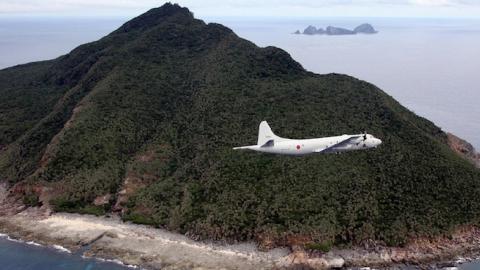China has a habit of directing international attention to one area while pulling maneuvers elsewhere. This year began with Beijing landing aircraft on its artificial islands in the South China Sea and moving an oil rig into waters off Vietnam. But even as these activities continue, the U.S., Japan and their allies must also keep eyes on what could happen in the East China Sea.
The Senkaku Islands between Japan and China have been the object of a mounting dispute between the two countries since 2010. Japan claims sovereignty over the Senkakus, and until the 1970s Beijing appeared to agree. But after hearing reports of oil reserves in the area, China decided that the islands were crucial to its maritime strategy and began staking its own claims.
Since then, incidents between Chinese and Japanese vessels in the Senkaku waters have escalated. In 2013, a Chinese frigate locked its weapons-targeting radar on a patrolling Japanese destroyer. Weeks ago, a heavily armed Chinese “coast guard” vessel ventured into the area for the first time.
The East China Sea could become the next locus for China’s aggression against its neighbors. Armed conflict is increasingly possible.
Scholars linked to the Chinese government privately suggest that “a crisis” might be needed to resolve the dispute over the Senkakus. The Chinese assume that if they can manufacture a confrontation that pushes both sides to the brink of combat, the Japanese would quickly back down and seek diplomatic solutions, especially if it felt it couldn’t count on U.S. military support.
Rising numbers of Chinese aircraft and “research” vessels are venturing by the disputed islands. China uses these incidents, which spiked in 2012 and mid-2014, to assert their sovereignty over these waterways, despite Japanese protests.
China insists it wants closer relations with Japan, which Japanese Prime Minister Shinzo Abe endorses. He and Chinese President Xi Jinping have met twice since 2014, with an Abe spokesman noting at the most recent G-20 summit that “Japan-China relations as a whole see gradual improvement.” Chinese Premier Li Keqiang has urged Japanese business to help improve bilateral ties.
Yet Beijing has a habit of mixing dialogue with shows of force. In both 2014 and 2015, while Mr. Xi and other senior Chinese officials were meeting with their Indian counterparts, the Chinese military moved troops and equipment into disputed areas along the Sino-Indian land border. The Chinese troops withdrew after Indian leaders protested, but Beijing had made its aggressive point.
As the Chinese economic crisis deepens, Beijing may be especially tempted to repeat such a gambit if it calculates that a foreign dust-up can rally nationalist sentiment behind the government. A confrontation could begin with an “accidental” incident at sea, or firing in “self-defense,” followed by a rapid movement of ships and planes to protect endangered assets. Crippling fire, or even the sinking of patrol craft or encroaching aircraft, could follow. While additional forces steamed forward, international diplomats would call for restraint, apologies and withdrawals from both sides. The end result, the Chinese may calculate, would likely entail enhanced diplomatic support for China’s claims as states judge that near-term quiet would benefit them more than supporting Japan’s rights.
But the most important reason why trouble may be brewing is that President Barack Obama will soon be leaving office. Like Russia and Iran, China has found that Mr. Obama often backs down from confrontation or substitutes words for actions.
If an incident between Chinese and Japanese vessels did escalate into armed conflict, Beijing may assume that Washington would pressure Tokyo into refraining from insisting on a robust joint U.S.-Japan response. Beijing may think that Mr. Obama has little taste for a conflict with China ahead of a U.S. presidential election. After Syria and Islamic State, another international crisis on Mr. Obama’s watch could harm any Democrat’s chances in November.
Would Beijing risk a military confrontation to achieve its objectives in the East China Sea? Mr. Xi wouldn’t be the first statesman to use a short war to achieve political objectives. Egypt’s Anwar Sadat did so during the 1973 Yom Kippur War, launching a conflict that he knew he couldn’t win militarily but that could change the dynamics of a stalled political dispute. Sadat counted on the U.S. and other countries to demand a halt to the fighting and move to the bargaining table. They obligingly did.
Chinese forces could similarly make a swift move into the East China Sea and cease hostilities just as quickly. A call for international arbitration would follow, perhaps in China’s favor—even as Beijing secures aggression as its new status quo.
There is far more at stake in the East China Sea than energy reserves and Japanese territorial sovereignty, important though they are. The most important issue may be Japanese confidence in its U.S. ally. For China, disrupting the bedrock of the U.S. position in Asia would be as valuable as striking oil.




















